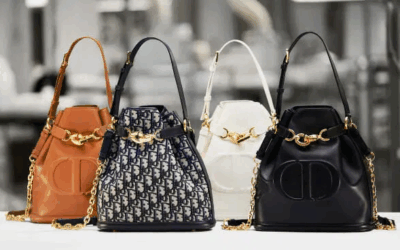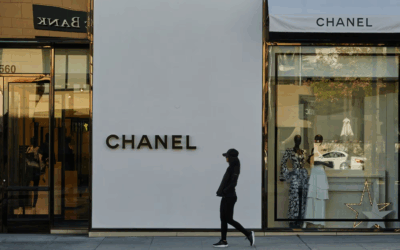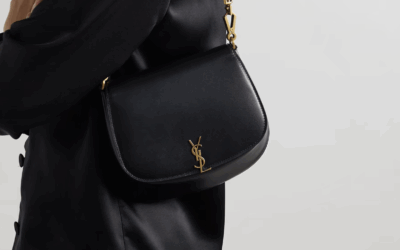 Embark on a Cosmic Journey Through the Paradoxes of Luxury and Dupes
Embark on a Cosmic Journey Through the Paradoxes of Luxury and Dupes
Counterfeit or Counter-Narrative? China’s Quiet Revolution in Luxury Handbags
by Thea Elle | Apr., 26, 2025 | Luxury Industrial Complex
For decades, the luxury handbag market has been dominated by European fashion powerhouses—names like Louis Vuitton, Chanel, and Hermès conjure images of status, exclusivity, and craftsmanship. Yet behind the glossy storefronts and celebrity endorsements lies a quieter, more controversial evolution. In the shadow of high fashion, China has emerged as a formidable player—not just as a manufacturer, but as a disruptor reshaping the very definition of luxury. The rise of high-quality replicas, often dismissed as mere counterfeits, points to a deeper, more nuanced transformation within the global fashion economy.
In recent years, China’s so-called “superfakes” have sparked global conversations about authenticity, access, and cultural hegemony. These are not the flimsy knock-offs of the early 2000s; they’re nearly indistinguishable from the real thing—crafted with precision, premium materials, and increasingly, pride. This underground economy has grown into a multibillion-dollar industry, not only challenging the intellectual property rights of luxury giants but also the moral and economic assumptions that underpin them. As the line blurs between original and replica, consumers are beginning to question what they’re really paying for: the bag itself or the brand behind it.
This shift is more than a legal or economic issue—it’s a cultural one. China’s quiet revolution in the luxury handbag world reflects broader themes of empowerment, rebellion, and redefinition. It’s a counter-narrative to Western-dominated standards of luxury, where value is no longer solely dictated by European fashion houses but by a global marketplace of informed, discerning consumers. In exploring this complex landscape, we’re forced to reconsider what luxury means today—and who gets to define it.

Luxury, Once a Fortress, Is Now a Glass House
There was a time when the idea of owning a luxury handbag was less about the bag itself and more about what it represented. The brand was a password. The waitlist was a rite of passage. A $4,000 bag didn’t just hold your things—it held your place in society.
Back then, what you wore said you belonged to a world where access was earned, not bought outright. Heritage mattered. Boutique etiquette mattered. Your ability to “know someone who knew someone” mattered.
But in today’s hyper-connected world, those walls are coming down. We’ve entered an age where factory walkthroughs trend on TikTok and digital whistleblowers break the exclusivity code wide open. The old luxury story—of secluded European workshops and rare artisanal techniques—is being re-examined, and increasingly, rewritten.
Bags Without Borders: Where Prestige Actually Comes From
Walk through a modern manufacturing hub in southern China and you’ll see something unexpected: not a warehouse of knockoffs, but high-spec facilities with clean floors, precise tooling, and craftspeople who operate with surgical skill.
These aren’t counterfeit dens—they’re mirror images of the luxury production lines they once served. Many of them were trained, contracted, and later cast off by the very brands they now rival. They use the same patterns, similar materials, and in many cases, the same hands.
It’s not that these factories lack standards. Quite the opposite. They often exceed what’s required by mainstream luxury houses, especially in their top-tier replica lines. Their goal isn’t deception—it’s excellence, at a fraction of the price.
When a factory worker finishes their shift assembling branded bags and then, after-hours, crafts a nearly identical version without the logo, what’s truly being replicated? The bag—or the branding myth?
Explore New Arrivals Here
The Invisible Markup
Consumers often assume that a steep price tag ensures better quality. But in the luxury world, the math rarely works that way. A significant portion of the cost goes toward intangible assets: prestige, advertising, scarcity.
That’s where replica culture has found its foothold. Today’s buyers are no longer just duped by lookalikes—they’re deliberate. They seek out alternatives that carry the same craftsmanship, minus the status tax.
A growing segment of shoppers are turning the replica into a statement of values, not vanity. It’s a protest against bloated pricing, opaque supply chains, and brand narratives that no longer hold up under scrutiny. In this view, a $300 replica isn’t “cheap”—it’s conscious.
Craft Over Cred
In the past, the word “replica” was synonymous with low-quality knockoffs. But in 2025, that assumption no longer applies. The replica industry has evolved into something far more refined—an ecosystem of artisans, engineers, and entrepreneurs producing items that rival, and sometimes outperform, their luxury counterparts.
From the curve of a zipper pull to the subtlety of an embossed logo, details are executed with such precision that many replicas are indistinguishable without disassembly. Often, they’re crafted by workers who once built the originals—and sometimes, still do.
So what separates the “real” from the “fake”? Increasingly, it’s not the build—it’s the branding. And for a new generation of buyers, the label matters less than the labor behind it.

The eye can’t always tell the difference. But now, it doesn’t have to.
From Copycat to Competitor
The idea that China simply “copies” is dated. In the ’90s and early 2000s, Western brands flocked to China for cheaper labor and larger output. They brought their blueprints, their quality standards, and their exclusivity playbook—and China absorbed all of it.
What followed wasn’t just imitation, but evolution. Chinese manufacturers refined those techniques, built better systems, and began innovating on their own terms. Today, they’re not just replicating—they’re competing.
Whether it’s leather goods, fine jewelry, or even design-forward tech, Chinese producers have stepped into the spotlight with offerings that challenge the Eurocentric hierarchy of luxury. They’ve earned the skills—and now, they’re shaping the future.




0 Comments